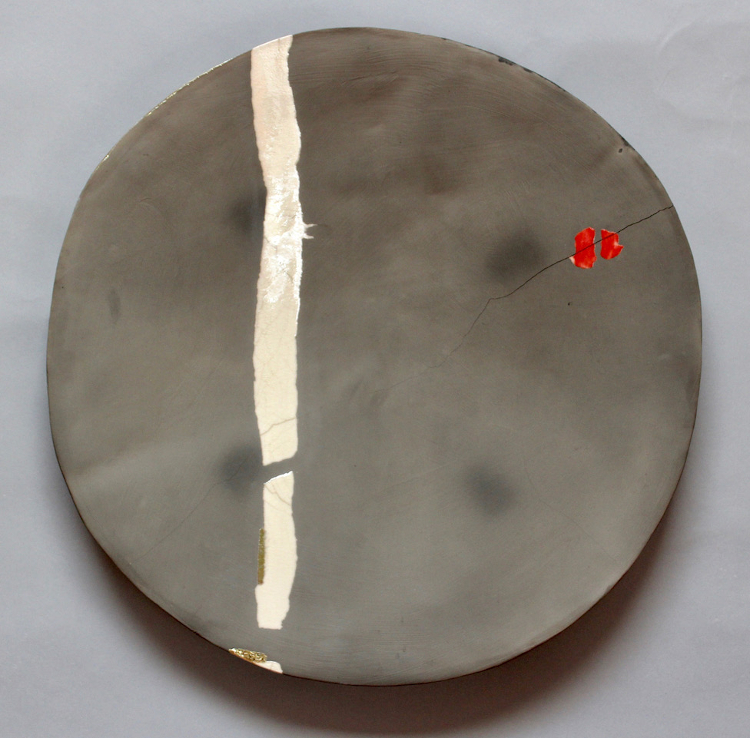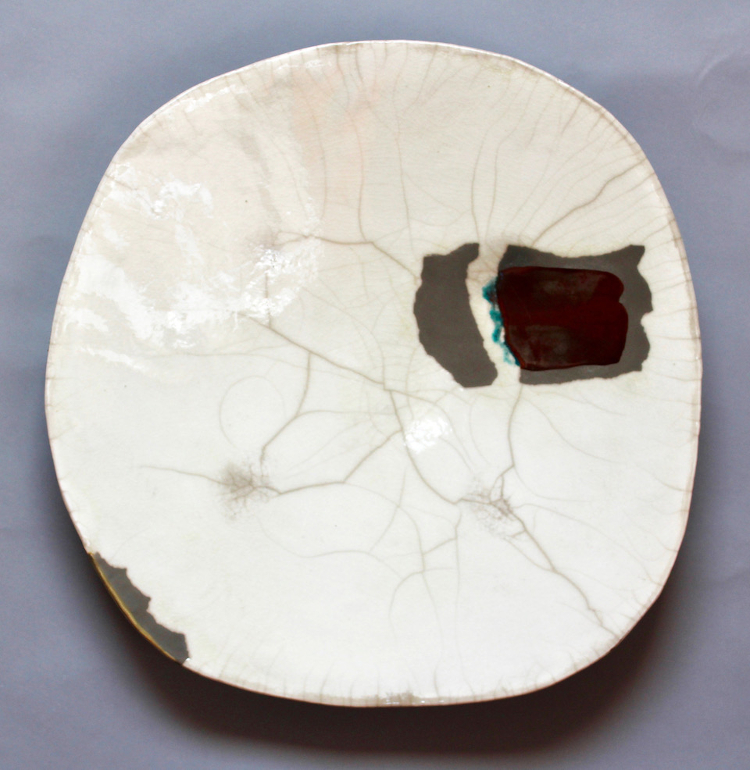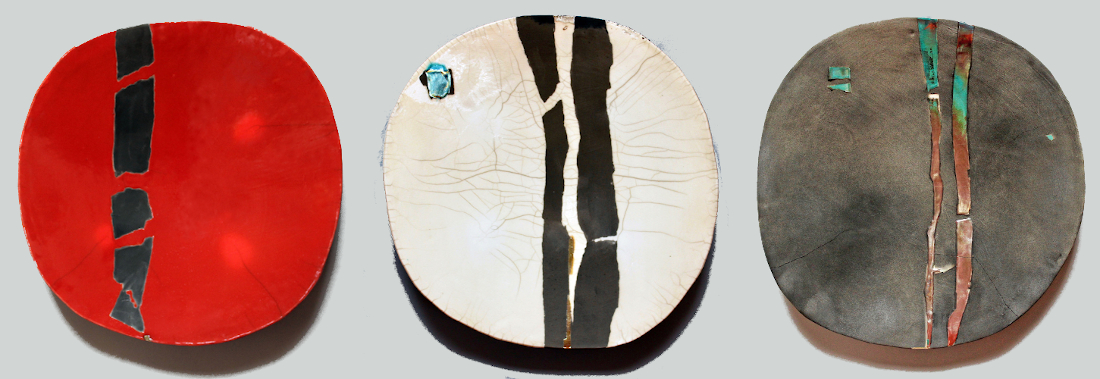
By Edna Dickinson
This series of work began from looking at the comal, a cooking pan used in the streets of Mexico for frying gorditas etc. The form is a simple shallow curve, just enough curve to keep in the frying oil.

The idea began with this simple curve. I went into the studio and began trying to build this form, trying to get the curve just right to support the form, to hold up during the kiln firing.
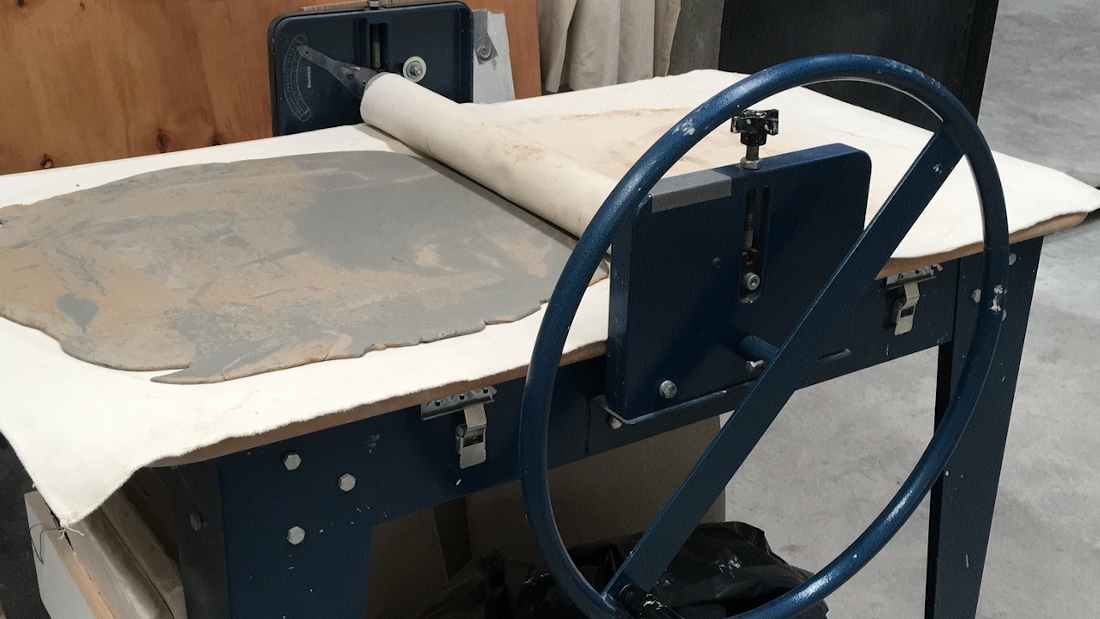
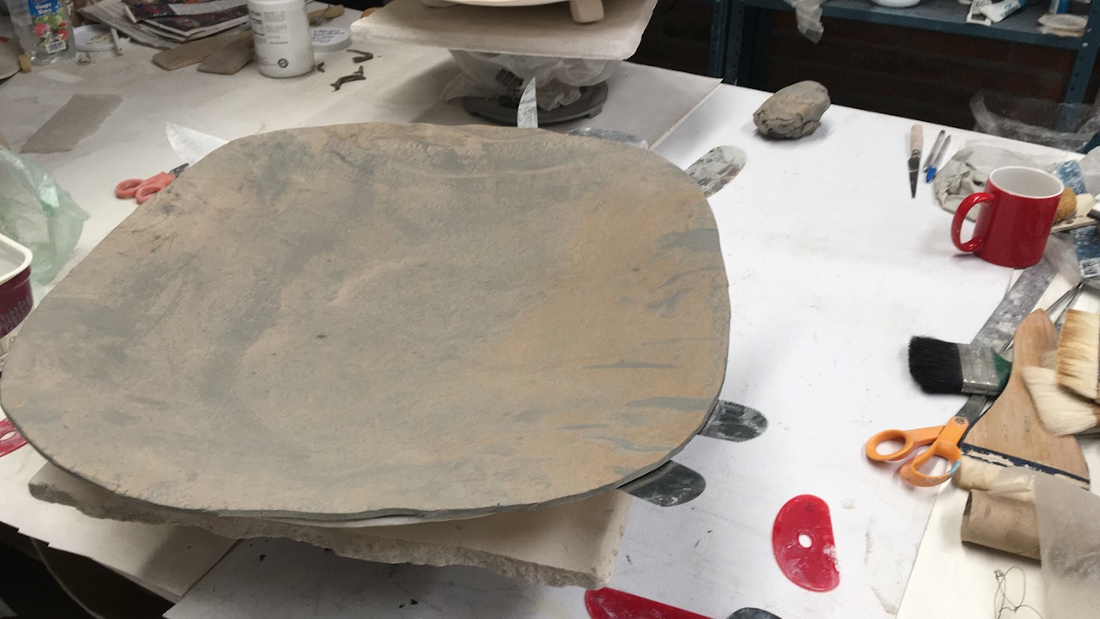
When we moved our studio Guadiana to Calle Canal I found a place for the raku kiln on the terrace of my home. I began thinking about using this type of firing to create a simple crazed surface for these platter works. I wanted this work to use an ancient method of firing and for the design to be simple and calligraphic.

Since this firing technique originated in Japan during the 1600’s, it seemed correct for the design to pay homage to Japanese calligraphic characters. I began experimenting with torn newspaper to create the effect of simple abstracted lines. Sometimes the newspaper piece was torn, sometimes folded, sometimes falling down the platter. I played around until I was pleased with the overall effect. The paper left the clay below it unglazed. During the firing these broken lines would become smoked and charcoal black.

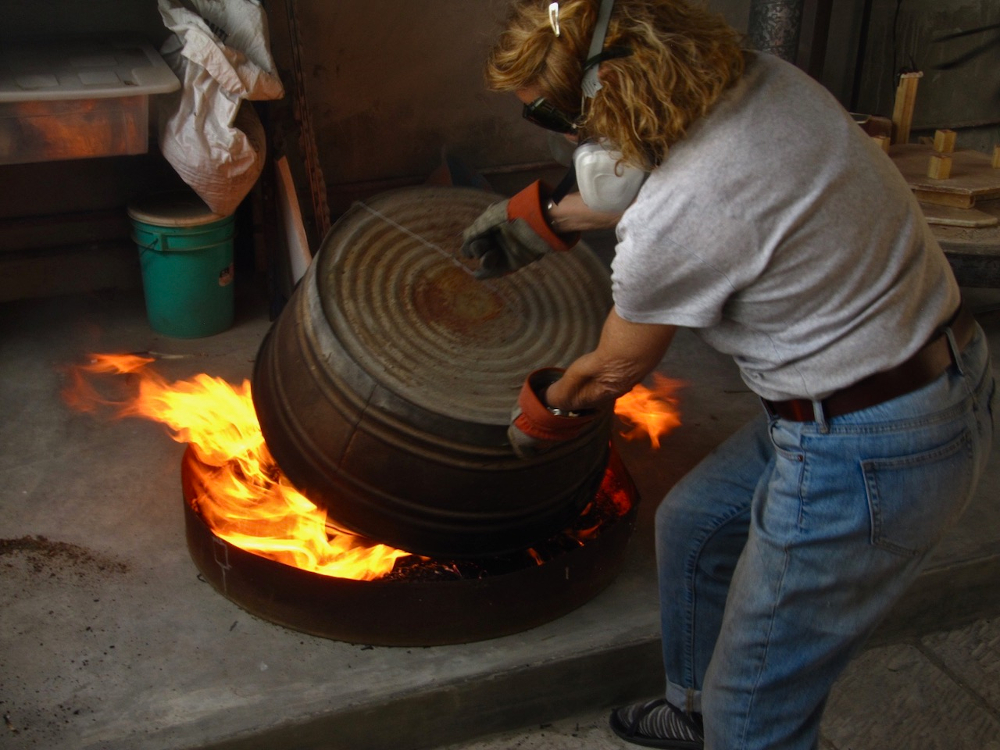

As I worked, these dark markings merged with a touch of gold luster or turquoise during the glazing. Blocks of color emerged and a "stamp" of color nodded to the Japanese stamps. As the series continued the glaze on the platter became all one color, a luscious red or perhaps a blue, while still keeping the black lines. I am still working so will see what develops.
In addition to studying art at California State University, I also have a science degree. Beginning in the 80s, I worked 20 years in Seattle's first biotech company, Genetic Systems, helping to develop the first blood test for HIV. Although I always continued to work weekends and evenings in a ceramic studio.
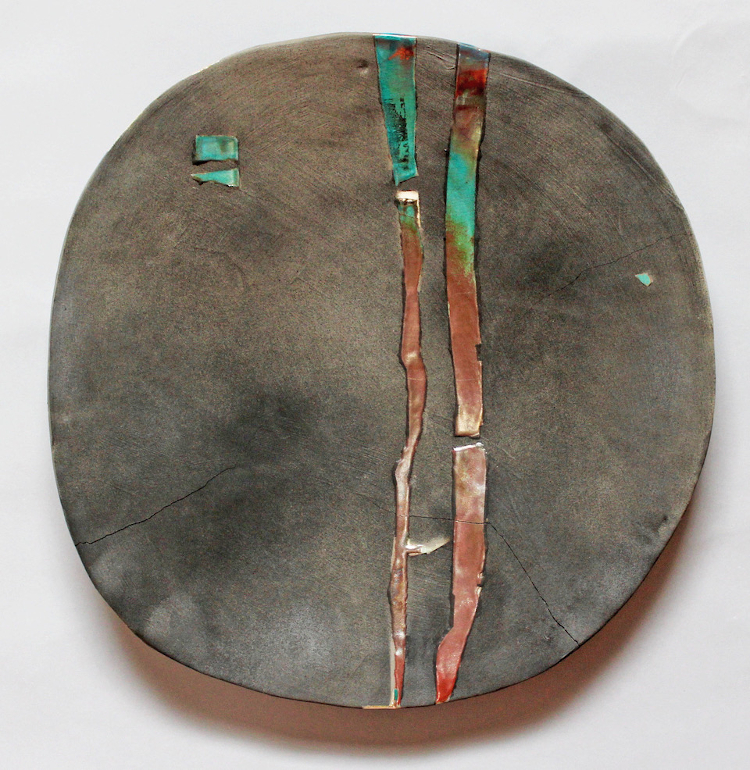
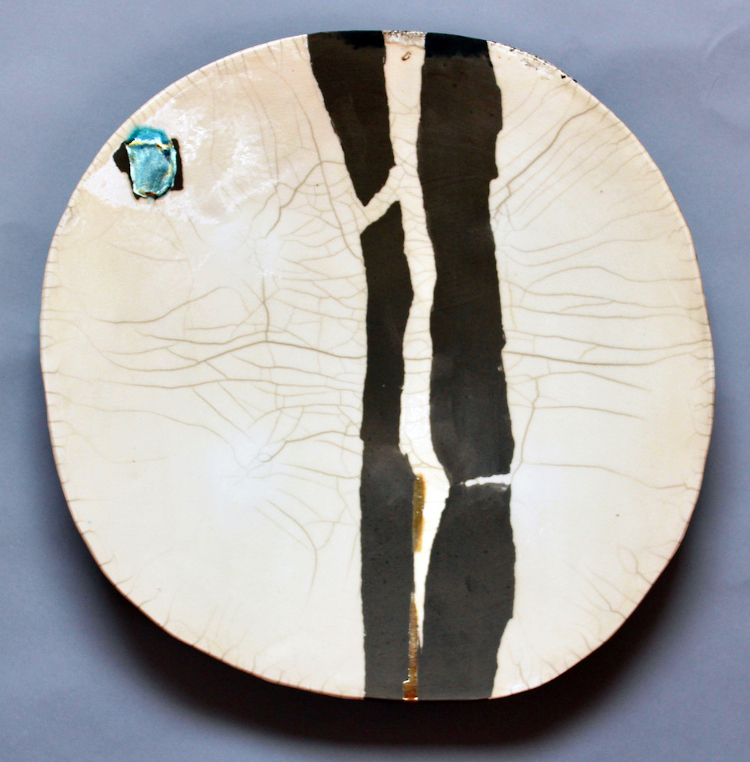

Part of my interest in ceramics has been to continue researching and pushing the limit of what clay can do and I am happiest in the chemical room mixing and testing glazes.
I also developed a special clay for these platters, one that withstand the extremes of leaving the kiln red hot, at 1836 degrees and then going directly into sawdust. That quick cooling contraction creates crackles in the glaze that the sawdust smoke gets into. For this I strengthen the clay with sand and long-fiber paper.
I control as much as I can and then trust to serendipity and the kiln gods. You never know exactly what it is going to do. I hope you like the results.
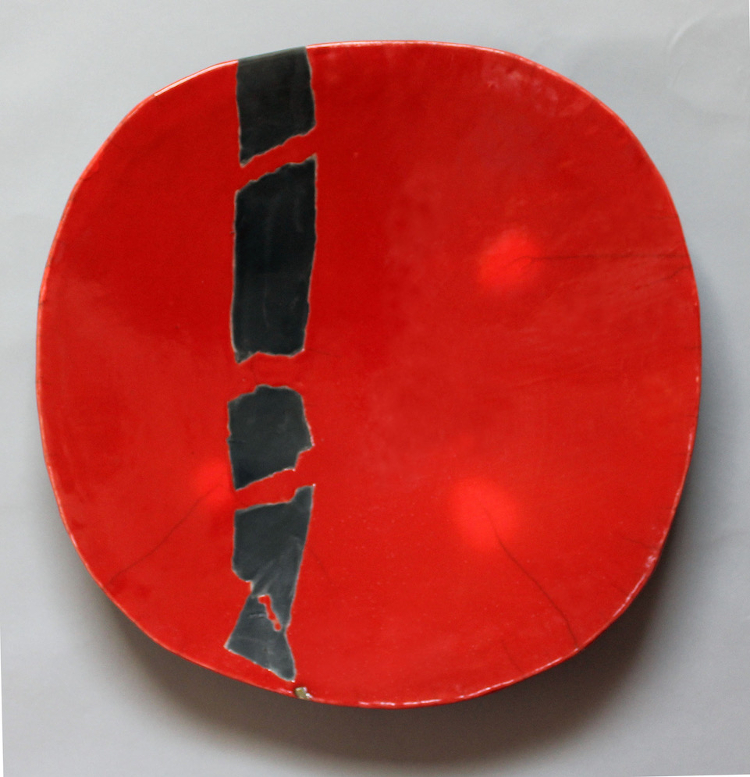

 ***
***
ContemPLATO #3 Ceramics - opening
Saturday, June 5, 3-5pm
ZOHO Gallery, Fabrica de Aurora
Please join us for our first opening since the beginning of the pandemic. Covid precautions will be observed, including limiting the number of people in the gallery.
Please join us or you can view the show on the ZOHO Gallery website: www.zohogallery.com.
If you are interested in learning more about any of the platters you can contact Tonina or Javier at zohogallery@gmail.com.
Presales are possible.
